Previous Episode

episode
Next Episode
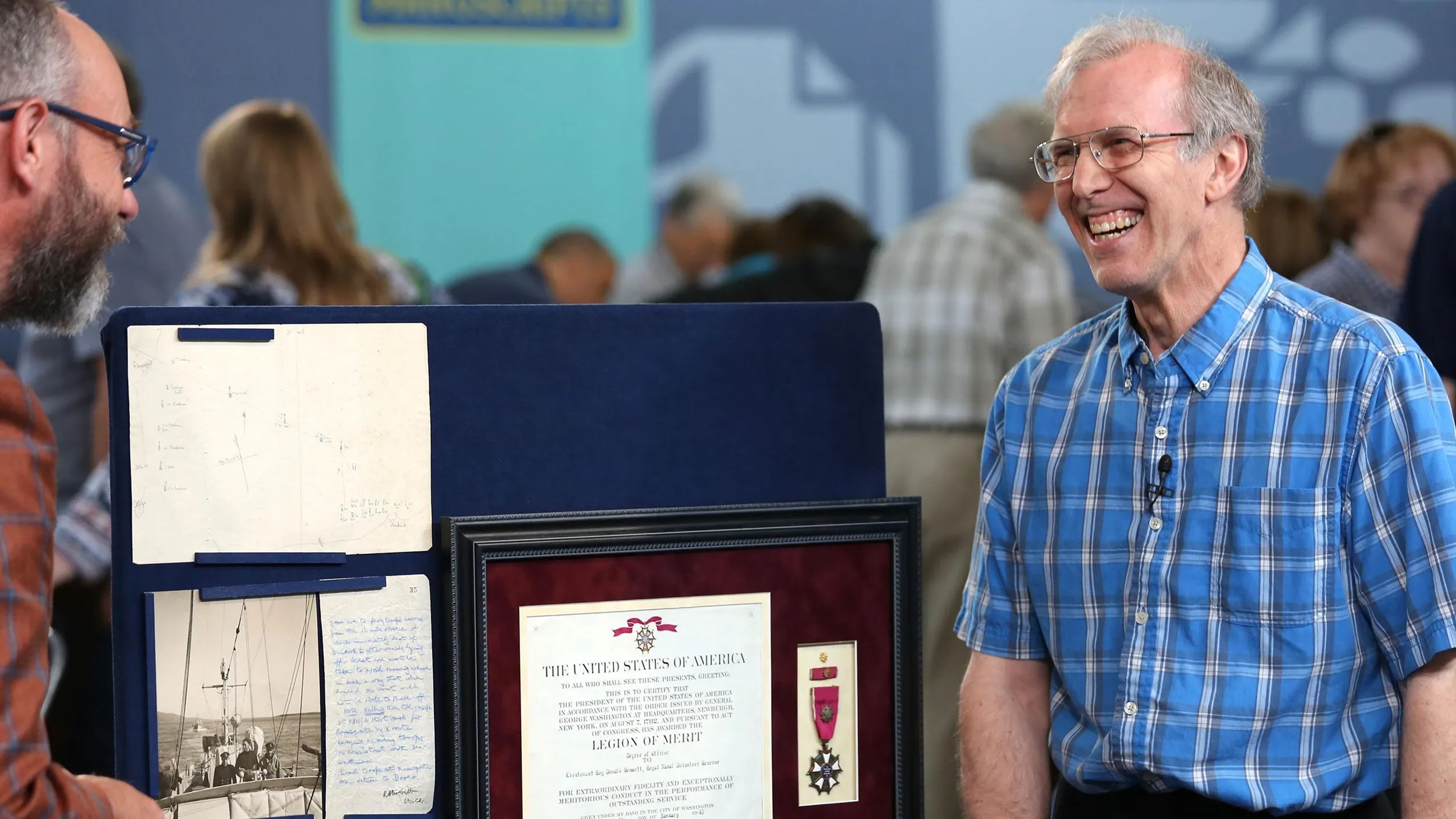
episode
The Red Sox, Carl Schweninger, and Karen Carpenter. Which treasure is valued at $300,000?
HOST: ANTIQUES ROADSHOW is exploring treasures from all over the Mid-Atlantic region in Harrisburg, Pennsylvania.
GUEST: He found it at a dumpster.
APPRAISER: Get out of here, really?
GUEST: Yeah.
APPRAISER: As far as I know, this is the first head in the box we've had on the Roadshow.
GUEST: No!
APPRAISER: Yes!
HOST: Not too far from Harrisburg, the ROADSHOW explored the famous Gettysburg National Military Park. The Battle at Gettysburg, fought from July 1st through the third in 1863, was a crucial victory for the Union, but came at great cost to both sides, resulting in the largest number of casualties during the Civil War. Several months later in November, President Abraham Lincoln gave his historic Gettysburg Address, clarifying what was at stake for America's democracy, of a government of the people, by the people, for the people. Back at the ROADSHOW, documents connected to a famous Civil War general are waiting to be examined a little later on. But right now, check out this very rare 18th-century survivor.
GUEST: It was done by somebody named Zebiah Gore when she was 11 years old. And she was the grandmother of a woman named Mary Leeds, and my grandmother worked for Mary Leeds. And my grandmother acquired the sampler.
APPRAISER: So Mary Leeds gave her the sampler?
GUEST: My grandmother helped the woman. She wasn't a paid employee. She helped the woman. And I think in... just saying thanks, she gave it to her.
APPRAISER: And when was this all taking place?
GUEST: My grandmother was a widow, and a young widow, and so I would guess it was in the 1920s or '30s.
APPRAISER: And how long have you had this textile?
GUEST: My grandmother died in 1973. So it was around that time.
APPRAISER: You've done a little bit of homework about this, I know. But you might not know some of the things that I've been able to find out for you.
GUEST: Oh, now that's what I want to know. (laughing)
APPRAISER: As you know, this was made by an 11-year-old named Zebiah Gore. She was born in 1780. So this was done in 1791. What is her little motto that she's put here? I think that's interesting.
GUEST: "Now we are taught to live, there's nothing esteemed worth learning but the way to die."
APPRAISER: Boy, that's a little morbid, right? But when you think about it, the childhood mortality was very high in the 18th century, and so this was always on any family's mind. This is one of a small group of samplers that are known to have been made in the Boston, Massachusetts, area, where the Gores were living, as you know. Very British sort of scene here. The shepherd and the shepherdess with the sheep is very typical of this sort of Boston-area school, as is the black background here. And you showed me some literature that there is a nearly identical sampler to this in the collections of Winterthur.
GUEST: Right.
APPRAISER: And who did that sampler?
GUEST: Elizabeth Richards.
APPRAISER: And who was she?
GUEST: We think the two girls were cousins.
APPRAISER: They… Not only do you think, they were cousins.
GUEST: Oh, okay.
APPRAISER: So, Winterthur has the basic match to this sampler-- different motto, but basically the same scene, which implies that they were all going to the same school.
GUEST: Right.
APPRAISER: Did you know that Zebiah Gore had a sister named Hannah Gore, who also has a great sampler?
GUEST: Oh...
APPRAISER: A little bit different, but still this sort of picture sampler, canvas work sampler they're often called. This is a remarkable sampler. The preservation of this is unbelievable. The colors are so bright, and so wonderful. It's as if this was kept in a closet and no one ever looked at it. It's in the original frame, it's in the original condition, it's got a little crack here...
GUEST: That's always been there.
APPRAISER: And I'm not sure that I would do anything with it. You told me you'd been offered how much for it?
GUEST: $5,000.
APPRAISER: $5,000.
GUEST: Several years ago.
APPRAISER: Several years ago. I would tell you that conservatively at auction today, this sampler would sell for between $40,000 and $60,000.
GUEST: No!
APPRAISER: Yes!
GUEST: Okay.
APPRAISER: You going to take it out of the closet now?
GUEST: Well, I don't want people to know I have it. (laughing)
APPRAISER: You brought in this wonderful, mysterious box.
GUEST: Yes.
APPRAISER: And, I know everyone's been asking at the table, all I wanted to say was, "What's in the box?" And if you could hold that for a moment. Now inside the box we found this wonderful plaster head with human hair, human eyelashes, and a strangely realistic human hand. What can you tell us about the contents of the box?
GUEST: I don't know if anyone has heard of Willie Sutton. He was a famous bank robber, well-known bank robber. He was also well known for breaking out of prisons. This was his, that he used in an attempted breakout. He had made this himself, in prison.
APPRAISER: He reportedly robbed over 100 banks. He had escaped successfully from prison three times, and this is a dummy head and dummy hand that he used in an unsuccessful escape from prison.
GUEST: Yes.
APPRAISER: Well... and the prison was run by your grandfather.
GUEST: Yes. After he was released from the Eastern Penitentiary, they sent it up to the Camp Hill Prison, where my grandfather was located, and then he simply kept it upon his retirement, since Willie had been released long since.
APPRAISER: Now, reportedly, what Sutton had done, was over the course of several months-- possibly even years-- he made this false head, using hair from the barbershop-- and it is actually real human hair, same with the eyelashes. We have no idea where he got the pigments.
GUEST: Right.
APPRAISER: Where do you find paint in prison? You just can't go to the store and get-- color with toothpaste and pink.
GUEST: Yeah, but they're very creative. I'm sure they mixed things and made things up and everything. You know, as far as the plaster, I heard he went to the dentist a lot.
APPRAISER: (laughing) He fashioned this wonderful head, left it in his bed, left the hand clutching a corner of the bedsheet. Do you know what happened that night when he tried to escape?
GUEST: Unfortunately, unbeknownst to him, two other inmates in another area of the prison also attempted to escape at that point, at about the same time. And that set off all the bells and whistles and alarms. He ran back to his cell.
APPRAISER: This escape attempt was in August of 1941.
GUEST: Yes.
APPRAISER: And it was just a few years later, when he then managed to finally escape, for several years. And in 1950, he was actually the 11th person to be added to the FBI's most wanted list. Willie Sutton was also known for a wonderful, wonderful quote. Reportedly, he was asked once why he robbed banks. And he was reported to have said, "Well, because that's where the money is." Well, later in life, he vehemently denied ever saying it. But he said it sounded good, and said it sounded like something he would say. And he titled his autobiography "Where the Money Was" and talked about how he never, ever said that.
GUEST: Yes.
APPRAISER: I mean, this is such a wonderful, wonderful piece, and doing the research on it, there's not a lot of information. Most of the escape tools, props and things like that, that were used by prisoners to help them escape, are owned by prisons or in prison museums. So not a lot of these come up for auction. And we almost never see anything so prominent, and, frankly, so well done. I mean this is a master work. But without the box, and the provenance of the label on the box, it's just a creepy plaster head. But if you look at pictures of Willie Sutton, it looks just like him.
GUEST: Yes.
APPRAISER: It is amazingly well done. And after conferring with my colleagues, we are able to give it a very conservative auction estimate of $2,500 or $3,500.
GUEST: Wow, that's nice. That's very nice. That's surprising.
APPRAISER: As far as I know, this is the first head in a box we've had on ROADSHOW. (laughs)
APPRAISER: What did you bring today?
GUEST: Brought the "Queen Mary" and a Louis Vuitton trunk.
APPRAISER: Wow. All right, the trunk is going to rugs and textiles. And our team in folk art, they do nautical stuff.
GUEST: Okay.
APPRAISER: All right?
GUEST: All right.
GUEST: I thought they were more folk art, but...
APPRAISER: Yeah, and I think you're exactly right. I think they were done by somebody who's probably more of a sign painter, not somebody who was a so-called fine artist. They're probably late 1860s, 1870s, that would sort of be my guess.
APPRAISER 1: Oh my, is that fabulous. It's been repainted and touched up here and there.
GUEST: Yeah.
APPRAISER 1: It's definitely German.
APPRAISER 2: It is German.
GUEST: German.
APPRAISER 1: What do you think, $2,000, $1,500, even repainted?
APPRAISER 2: I'd say somewhere between $1,800 and $2,400. Yeah.
GUEST: Wow.
APPRAISER 1: It's fabulous.
GUEST: Thank you.
APPRAISER 1: We've never, ever seen this form.
GUEST: Thank you.
GUEST: These are a couple of prints. They're watercolors that I found at a book sale, and I bought them for the frame.
APPRAISER: May I ask how much you paid?
GUEST: Uh, five dollars apiece.
APPRAISER: They're by an Italian artist by the name of Alighiero Boetti. Born in 1940, originally, in his early part of his career, associated with the Arte Povera movement in the 1960s. But as he moved into the 1970s he began to distance himself a bit from that group, actually spent a good amount of time in Kabul, where he was introduced to the traditional craft of embroidery. And that complemented and coincided with his interest in patterns and recurring themes and structures, which you can see here in his use of repeated letters.
GUEST: Okay.
APPRAISER: And part of his interest in patterns had to do with the tension and the relationship between order and disorder, and what was left up to chance and what was purposeful. So you see sometimes that the configuration of the letters or the numbers in certain cases don't necessarily spell something or say something. Sometimes they do, sometimes they don't. These are pochoirs, which is a printing process that allows for a certain degree of unique hand-coloring in each print. They're numbered 14 out of 40. They are from a larger set of nine. And for the two prints, I would put an auction estimate of $5,000 to $8,000 on these prints.
GUEST: Really? Wow.
APPRAISER: So quite a return on a $10 investment.
GUEST: Yeah.
APPRAISER: If you had the entire set of nine prints, the complete set sells for $30,000 to $40,000 at auction.
GUEST: Wow. Guess I've got to go back to the book sale. (laughs)
GUEST: Well, these are a couple of documents that have been passed down through the family to me. They were originally drawn up by-- or copied if you will-- by my great-grandfather Edwin Lee Hoffman, who was a captain in the Confederate Army. He started out his service right at the beginning, as soon as Virginia left the Union. He was in a little militia unit from Martinsburg-- then Virginia, now West Virginia. They eventually became D Company of the 2nd Virginia Infantry, in the Stonewall Jackson Brigade. He served for several years, until he was wounded at Kernstown, and he had several bouts of diarrhea during the war, and by 1864 was deemed unfit for combat duty, so he was reassigned to what they call the Invalid Corps. He was the post adjutant at a supply depot in Staunton, Virginia, for the last year of the war. The adjutant is normally the person that takes care of doing the paperwork.
APPRAISER: Right, right.
GUEST: So he would have received a copy of the orders of surrender and also-- it's General Lee's order of surrender-- and also his farewell to his troops, which he then made another handwritten copy of, and they're official copies.
APPRAISER: April 9, 1865, General Lee's army surrenders. About 28,000 troops at Appomattox Courthouse. And, on April 10, Robert E. Lee issues his famous General Order No. 9, which we have right here, on the copy of it, as you said. As he was the adjutant, he would have been required to write these up, and they would have been read to the troops.
GUEST: Right.
APPRAISER: The war's finally over, thousands of dead, and at the end here... he's talking about surrendering the army, but at the end he's just-- he's trying to get them to go home "with an unceasing admiration "of your constancy and devotion to your country, and a grateful remembrance of your kind consideration. For myself, I bid you an affectionate farewell." You read all the histories of Lee, his men loved him, and this is just another example of why they did.
GUEST: Right.
APPRAISER: And we've got this document over here, which is also April 10, and it's basically the agreement on how the troops will be surrendered. They'll turn in their equipment-- sabers, pistols, flags, and they will march home as a unit, in a brigade, and they'll be exchanged later. Well, there are the original copies of Lee's order, and then there are the copies that were...
GUEST: Made.
APPRAISER: Right, copies that were made to be read to the troops of the original order. So we talked about it for quite a while, and we thought that an auction appraisal, probably conservatively, would be in the $6,000 to $8,000 range. And they could-- they could do better than that.
GUEST: Right.
APPRAISER: I mean, it's just-- it's one of those moments in time.
GUEST: Right, yeah, I've tried researching it, and really have not come up with anything.
APPRAISER: Yeah, yeah, and there's probably a lot of these made at the time, and there's not a lot of them that seem to survive.
GUEST: I believe it's a piece of Rookwood pottery, and I think it's a humidor. My aunt gave this to me about 30, 35 years ago. She had purchased it in a thrift shop in Queens, New York. She paid about five dollars for it. They are some marks on the bottom, and I believe it's Frederick Sturgis Lawrence who was the decorator of the piece.
APPRAISER: Indeed. All of that is true. And how do we know it's a humidor? This is very often the giveaway for humidor, as it is open, has little holes, so you can put a sponge-- a wet sponge-- to keep your tobacco products moist. But the interesting part of this piece is the fact that it has such lovely painting on it. It is a piece of Rookwood standard glaze. The standard glaze was one of their best-known, most-beloved decorating techniques, where an artist would paint a picture, whether a Native American chief-- of which they did not do many, fruits, flowers, and so on-- and cover the entire thing with a glossy, amber color. Sturgis Lawrence was one of their earlier artists. This particular piece is done in 1898. The company dates to 1880. He painted many different things, and he was, while a good painter, not their best painter. He was no Grace Young. But in this particular instance, he hit it out of the park.
GUEST: I agree.
APPRAISER: This is such a gorgeous rendition of this Native American chief, Big Bow. It's a little bit difficult to paint a portrait on a form like this. It truncates it a little bit. So it's unusual to have a chief on a broad, cylindrical piece like this. This is after the frontier is over. And this is a time when it is believed that everything about the Native Americans is going away. We have taken away their land, we have taken away their religion, we have taken away their languages. So there is a movement to safeguard that culture. And Rookwood Pottery purchased from the Bureau of American Ethnology photographs of Native American chiefs, and they would copy those and put those on the vessels like this. And... or plaques, even. Let's look at what's on the bottom, and the signatures. We have here the flame mark for Rookwood Pottery, and that's how we can assess that it is from 1898. And we have the shape number, which tells us that it is indeed a humidor. We have the title of the piece, and we have the artist's signature, the "S.L." for Sturgis Lawrence. And as a bonus, and that tells us that this piece was probably never used or cleaned, we have the original paper label from the store where your kin purchased it. So we have everything. This is absolutely pristine. Rookwood Pottery, and humidors, and standard glazes, were more popular 20 years ago and 15 years ago than they are today. If you were to put this at auction, it would probably be somewhere between $1,500 and $2,000. Maybe up to $2,500. In the mid-'90s, probably $6,000 to $8,000. There are fewer people who collect Rookwood pottery, there are fewer people who smoke, fewer people who are interested in humidors, but what you have here is still a very, very fine example.
GUEST: Thank you very much.
GUEST: I've grown up with this painting. Originally, it came from my grandfather. He was a restauranteur in Chicago, and he also enjoyed fine art, and decided to open an art gallery. I know that this painting was purchased at auction in 1972 and put into the gallery. He then passed away a few years later and the gallery closed. And it was passed along to my grandmother. She unfortunately passed away earlier in 2016, and at that point, it was passed along to my sister and I. And we love it, we've always thought it was kind of a fun painting. And the subject matter, as little kids, we'd kind of giggle and show our friends.
APPRAISER: The painting you brought in today is what I kind of call a "wow picture." It's an oil painting on canvas. It's Austrian.
GUEST: Oh!
APPRAISER: And it dates to the mid part of the 19th century. The artist is Carl Schweninger. The Schweningers were a family of artists. There's at least a junior and a senior, known as Carl I and Carl II. And we think this is Carl I.
GUEST: Okay.
APPRAISER: And he lived during the 19th century, born in the early part of the century, died at the end. And he was known as both a landscape painter and a painter of interiors and genre pictures. He obviously had quite a lot of popularity. His studio must have been in real demand, because in researching this painting, I discovered multiple versions of this painting.
GUEST: Yeah.
APPRAISER: Which had sold at auction in New York and in Austria.
GUEST: Oh, okay.
APPRAISER: And they are very similar, but they're all quite different. The artist's position was different, the draperies were different, the items were different, and he probably had commissions to paint multiples of them for wealthy... the bourgeois population of the Vienna area and around. What do you think it's worth?
GUEST: Maybe around $5,000? We were actually told not to bother bringing it today. Other family members said that it's not going to be worth anything, really, so don't bother, but I've always just loved it.
APPRAISER: Well, don't you listen to those people. (laughing) The one that sold in New York most recently, which was quite comparable to this, sold for $50,000.
GUEST: Oh, my goodness. Whoa.
APPRAISER: And my colleagues, who I chatted with about this, and I agree, that we think an appropriate auction estimate on this picture today would probably be between $30,000 and $40,000.
GUEST: Wow.
APPRAISER: The market for this kind of very classical mid-century European painting...
GUEST: Yeah...
APPRAISER: ...is softer than it was, so I don't want to encourage you with the $50,000 figure.
GUEST: Still... (laughs)
APPRAISER: But I think $30,000 to $40,000 would be a very comfortable figure to be in.
GUEST: Oh, my goodness. That's fantastic.
APPRAISER: So aren't you glad you brought it?
GUEST: Oh, my gosh, yes! (laughter)
APPRAISER: Me, too.
GUEST: Take it home and enjoy it. But insure it. Yes, oh, yes.
APPRAISER: Maybe $50,000.
APPRAISER: The paint and the style, you can tell it's meant to look like an old style painting, but it's done very recently.
GUEST: Uh-huh.
APPRAISER: Value-wise, they're just more like for decorative purposes.
APPRAISER: That's awesome. I love his big fingernails, you know, the way she's being carried in to be his victim.
APPRAISER: That's pretty neat. Love the way that it's weathered. You get this incredible sort of relief that basically was carved by rain and nature. It's certainly a $500 sign.
GUEST: Oh, okay, cool.
GUEST: I inherited the watch from my sister, who passed away a few years ago. And, apparently, it was a family piece.
APPRAISER: When you opened the pouch, and I looked at the watch, I was just blown away. It's completely done in black enamel, and all the way around the watch, on the sides, everywhere, it's studded with hundreds of rose-cut diamonds. The watch would have been made somewhere around 1900. But for a ladies' pendant watch to have lasted 120 years, give or take, and have no enamel damage or chipping, is just a rare feat. It's almost like it was produced, sold, put in a box, and never used.
GUEST: Wow.
APPRAISER: The movement is exactly what you want to expect. This is a triple-signed watch, which means that the dial is signed Tiffany & Company.
GUEST: Okay.
APPRAISER: The movement is signed Tiffany & Company, New York, and the case is signed Tiffany & Company. The dial is not just a plain dial. It's completely hand-painted in multicolor. Another trademark of Tiffany is that the case, the gauge of the medal in this watch is very, very heavy. It probably is twice the gauge of almost any other gold watches produced. We don't know who the maker was. Tiffany used the finest makers in the world to produce their movements. That cosmic play of the black and the white, it almost just shimmers like they're stars in the sky.
GUEST: Right.
APPRAISER: The watch is just absolutely drop-dead gorgeous. It more than likely on a retail level today would sell in the $12,000 to $14,000 price range.
GUEST: Wow. Oh my God.
GUEST: This was my dad's. I used to own an antique shop, and my father would bring me things to sell, as did many of my friends and family members. But I would never try to sell something until I knew exactly what it was, because I wanted to make sure I got the right price. My father found it in either like 1999 or 2000. And I never tried to sell it because I never had the time to really look at it or have it appraised by somebody who knew more than I did. So that's why we came.
APPRAISER: And you said your dad gave it to you. Where did you dad get it?
GUEST: Well, my dad was in construction, and he did a lot of work at Yale University, and he found it in the dumpster at Yale University. And it had some glass on it. He took the glass, and it was amazing that it wasn't cut. So he brought it to me.
APPRAISER: So he just found it.
GUEST: He found it in a dumpster.
APPRAISER: Get out of here, really?
GUEST: Yeah, yes, found it in a dumpster.
APPRAISER: You have an etching by a Chinese-born artist whose name is Zao Wou-Ki. And his signature in pencil is right down here in the lower right. Now, he was born in China, but in the 1940s, he and his wife moved to Paris. He was trained in China, but it was in Paris that he really started to make his mark in the late 1940s and early 1950s. And early on, he was influenced by European Modernists like Paul Klee, and even going back as far as Picasso. And this work really shows the influence of somebody like Paul Klee, who was a Swiss Modernist, decades before him. Now this is an etching called "Flora and Fauna" from early on in Zao's career. It was made in 1951, and it was produced and published in Paris in an edition of 200. So he signed it in pencil, and then there it got edition out of 200. In 1957 he took a respite from Paris and came to the United States. He had a brother in New Jersey. And pop art was just exploding on the scene at the time, and he wanted to get into that. Instead, he got very influenced by the mid-century Abstract Expressionist artists in New York, like Jackson Pollock and Willem de Kooning. He returns to Paris, and rather than start again in this vein, he began making very abstract paintings… and lithographs, and etchings. He was both a painter and an etcher. His early work from the late '40s, early 1950s, his early career work, like this, extremely hard to find.
GUEST: Oh.
APPRAISER: He wasn't as popular as he got in the '60s and '70s with his abstract work. Appropriately titled with the flora and fauna you can see the landscape with the trees, mountains here, all the little doodles he did around the border of the print.
GUEST: Lot of little critters.
APPRAISER: Yeah. He's become a very popular artist. By the '70s, into the '80s, he was hotly collected. Nowadays, he's one of the top Chinese-born artists-- even though he worked in Europe for most of his career-- Chinese national. Have you any idea what it might be worth?
GUEST: No, none.
APPRAISER: You didn't even know who it was by, so...
GUEST: No, I didn't know anything about it, I'm not going to lie. (laughing)
APPRAISER: So if this came up at auction, I would put an estimate on it of between $10,000 and $15,000.
GUEST: That's wonderful. That is so cool.
APPRAISER: What a find for your dad in the dumpster.
GUEST: My dad's here with me today and he's... my mother's going to be so happy.
APPRAISER: You walked in with a whole array of things.
GUEST: Yes.
APPRAISER: Where did you get them, and what were you expecting to find out?
GUEST: I purchased them at a thrift store that I go to. I wasn't sure what I had. I just like Asian artifacts and art.
APPRAISER: And you go to the thrift store often?
GUEST: I do. I go about twice a week to see what they have, because they get stuff in all the time.
APPRAISER: What do you think this is?
GUEST: I didn't know if it's a girl or a boy, but I think it's a girl. It looks like, serene, like maybe Buddha, but I'm not sure. I was just drawn to it, the carvings.
APPRAISER: You've pointed out some of the features that are important to recognize. One is the serenity of the face. And it's not only just the serenity, but it's the very fine-quality details, which indicates skill on the part of the person that did it. The discoloration you see here is from metal.
GUEST: Oh, okay.
APPRAISER: And it's a little hard to see, but right up here at the headdress, there's a hole. And these holes go all the way around the top. And at one time, there was probably a little metal diadem, crown, some sort of extra appendage that was part of this figure, indicating its importance as an object of devotion.
GUEST: Okay.
APPRAISER: Now going down from the head, look at the quality of the carving. The body is very subtle. There's kind of a curvature here, and you see the garment that is in these very tight, crisp folds as it falls in a somewhat stylized, but very realistic kind of pattern across the body, clinging to the form of the figure below. Now there's also, on the feet, these blocks. And there's a residue on the blocks indicating that it was set into a base.
GUEST: Oh, okay. That's what I was wondering.
APPRAISER: Because it won't stand freely.
GUEST: Right.
APPRAISER: And the other thing we can observe about it is the material. This is made of pine. Stylistically, the way the face is done, the robes and so on, correspond to a period of time in China and Japan during the 12th, 13th century.
GUEST: Oh, my gosh.
APPRAISER: And into the 14th century.
GUEST: Oh, my goodness.
APPRAISER: So roughly around 1200, and maybe even before.
GUEST: Oh, my goodness.
APPRAISER: This is Japanese.
GUEST: Okay.
APPRAISER: But it exhibits this international style of Buddhist art that was popular at that period of time.
GUEST: Is it like a Buddha, sort of?
APPRAISER: It's a figure of Kannon, who represents mercy, compassion. It's a happy figure, something that's good.
GUEST: (laughing) That's good, that is good.
APPRAISER: It's an androgynous figure. For something that is of such great antiquity, it's in really good shape. What did you pay for it?
GUEST: Two dollars.
APPRAISER: You paid two dollars?
GUEST: I did.
APPRAISER: I think it's likely worth between $4,000 and $6,000 at auction.
GUEST: Oh, my gosh, that's a lot. That's amazing. (giggles) That's amazing. So I did find something! I'm excited. Oh, my gosh. Thank you!
APPRAISER: What this is a chromolithograph, first quarter of the 20th century. Very popular then, but not so much now. Put it in an antiques store, you'd probably get $20, $25 for it, something like that.
GUEST: I appreciate the information about it.
APPRAISER: If somebody could identify which mountains those were, and which culture this was that's being depicted, that would go a long way to finding out what the real significance of the piece is.
GUEST: Right.
APPRAISER: Value is certainly in the eye of the beholder. If you had to beach house, you know, this would be a fabulous thing.
GUEST: Sure. Right.
APPRAISER: If you lived in the mountains, maybe not so much. I would expect it to be priced at around about $400.
GUEST: Okay.
APPRAISER: All right? Thanks for bringing it in.
GUEST: All right, well, thank you.
GUEST: These are a pair of shell pictures that my great-grandmother had in her house. We were always told that these were sailors' valentines, and my great-grandmother had a real affinity for shell and shell pictures. She used to make her own art out of shells. And so, I just think that it was something that she liked and it was a really kind of good fit for what she enjoyed.
APPRAISER: Sailors' valentines is how they're generally referred to in the antiques business. Originally, they were thought to be made by sailors themselves with found objects. There's no way sailors had the kind of time to find all of these shells and do that. These were made almost certainly in Barbados. We know that because sailors would go to Barbados as a waypoint during the sugar and rum trades in the mid-19th century. And in the late 19th century, after these got brought back, people would bring them to get fixed. Shells had come out, hinges had come loose, a lot like what's happened here, and there were scraps of Barbados newspaper found on the back. Turns out there was a cottage industry in Barbados that made these exclusively for sailors to purchase and bring back as mementos of their trip through the Caribbean. All of these shells are found in Barbados. These are probably made 1850, 1860. At auction, we would estimate them to bring between $3,000 and $5,000.
GUEST: Oh, wow. (laughing) Oh, wow. Wow, that's incredible.
GUEST: I bought it in an online auction, and it belonged to Karen Carpenter. And she wore it in a concert, which I have a photo of here. I would say probably judging based on her hair style, it probably puts it maybe about 1975 or so.
APPRAISER: Did you actually get the photograph with the jacket, or did it...?
GUEST: I did not. There was a fan who recognized the jacket. She was going through old photos and said, "Wow, I happened to be at that show where she wore the jacket." And so I got it through a fan.
APPRAISER: Right down on the left pocket we have the person who created the jacket.
GUEST: Oh.
APPRAISER: Or I should say, the artist who used felt pens. The artist Sukey dated it 1975. And we know Karen was just one of the best singers of the period.
GUEST: She was, yeah.
APPRAISER: Such a smooth, wonderful voice.
GUEST: Yeah.
APPRAISER: Very personable person.
GUEST: Yeah.
APPRAISER: There are all types of characters like the Blue Meanie right here on the collar. And if we turn it, we see the Beatles and the Yellow Submarine.
GUEST: Uh-huh.
APPRAISER: Now if we lift up the back panel, we see "Just for Karen."
GUEST: Oh, neat.
APPRAISER: The garment was purchased from a boutique in Hollywood called The Pleasure Dome.
GUEST: Okay.
APPRAISER: And they created custom things, one-of-a-kind things for customers, or had artists who did. It has the label in the back collar. The jacket is made of a heavy cotton, kind of canvas-type. Have you had it appraised, or...?
GUEST: I have not. All I know is the seller that I bought it from on the online auction allegedly was an assistant to Richard, and she got the jacket from him and then sold it online.
APPRAISER: What did you pay for it when purchased it?
GUEST: I paid about $300.
APPRAISER: About $300?
GUEST: Yeah.
APPRAISER: At auction, I believe this jacket would be between $2,000 and $3,000 on today's market.
GUEST: Wow. Wow.
APPRAISER: So, that was a great...
GUEST: Yeah.
APPRAISER: Great online purchase that you did.
GUEST: Excellent. Oh, wow. But thank you so much.
GUEST: I inherited it from my late father-in-law, who acquired it at an auction, probably 30 years ago. All I know is I remember him telling me that it was buried. And I've been trying to do research on it for years, and because of the inscription being in German, I can't figure out what it is.
APPRAISER: First of all, I don't read German, but we have some of our colleagues here who do. And I pestered a few of them to try to figure out what it says. And it's a birthday present.
GUEST: Okay.
APPRAISER: It was given to Charles Hexamer as a gift for his 50th birthday by the National German-American Alliance. He was president of that alliance, and founded it in 1901 in Philadelphia. And he was president when this was given to him in 1912. The Alliance, their mission was to promote German heritage within American culture, and they were a big proponent in promoting the Germans as some of the earliest American settlers and being part of the true American culture. They were big proponents against the restriction of immigration, and they were also big proponents against Prohibition.
GUEST: Hmm.
APPRAISER: And it's interesting that this was a punch bowl, because what would you serve in punch but an alcoholic beverage, perhaps? The artist is Hans Schuler, and he was a German-American artist, a German immigrant, he immigrated to Baltimore. He was known as the Baltimore monument-maker, because he made so many monuments for public display. And not just Baltimore, but Washington, D.C., and up and down the East Coast. It's signed with Schuler's name and the date, 1912. It additionally has the Roman Bronze Works mark on the back of it. It shows it was cast at the Roman Bronze foundry. It was made in collaboration with the very famous Baltimore silversmith named Samuel Kirk. The bottom of the bowl is marked "Sam Kirk" as well as the ladle. The handle is bronze, so the bronze part was made by the artist...
GUEST: Hans Schuler, okay.
APPRAISER: And the silver part made by Samuel Kirk, the silversmith. Did you notice all of the words around here?
GUEST: I did.
APPRAISER: Do you know what that says?
GUEST: No, I don't.
APPRAISER: It is the 45 states and the District of Columbia that were members of the German-American Alliance at the time that this was given to him.
GUEST: Ok.
APPRAISER: So they contributed to this gift, and so all of the states' names are on there.
GUEST: Hmm.
APPRAISER: The buried thing, I don't know whether that's true or not, but it kind of does make a little bit of sense, because the German Alliance disbanded after America entered the First World War. And, of course, all things German were very unpopular at that time.
GUEST: Ok.
APPRAISER: So you know, it's plausible that it was buried, that maybe it wasn't a proud thing to have it. They were trying to protect it from being destroyed, perhaps. It's very clearly marked, and it's nice that it was a collaboration between a German-American artist and an American firm.
GUEST: Yes.
APPRAISER: The artist didn't do a lot of things that have come up for auction or for sale on the secondary market, because most of his things are in public forums. But there are some records, and when they do come up they do quite well. So we think that if this were to come to public auction, in the condition that it's in, it would bring around $20,000 to $25,000.
GUEST: Awesome! That's great. It's so good to hear some information about it because I hadn't a clue.
APPRAISER: You could probably clean it up, take it to someone who would restore the patina. It would cost a couple thousand dollars to do that, but you might add as much as $5,000 or $10,000 to the value.
GUEST: And that was one thing I didn't know, if I should clean it or not clean it, so it had not been cleaned.
APPRAISER: You shouldn't do it yourself, but you should probably have a professional do it, and they really need to replace the patina, because the patina is gone from it.
GUEST: Okay.
APPRAISER 1: The collectibles line is so crazy-long, but I could run over to their table and just talk to the appraiser and scoot right back.
APPRAISER 2: It's probably, I'd say worth about $150 to $200.
APPRAISER 1: Thank you very much.
APPRAISER 2: In my humble opinion.
APPRAISER 1: Okay, in your expert opinion. He looked at it, he says it's probably from the 1920s.
GUEST: Okay.
APPRAISER 1: And it's probably worth about $150 to $200, okay?
GUEST: Great, great. Thank you so much.
APPRAISER 1: Thank you.
GUEST: I brought with me a number one issue of "Torchy," I think it's the original art, from Bill Ward 1949. I bought it for my wife, thought she'd like it, because we like this kind of stuff in our house. But she's a redhead, and this one's a blonde, so it's been sitting in my room for a while.
APPRAISER: What did you pay for it?
GUEST: $800.
APPRAISER: Well, Bill Ward was a very famous comic illustrator. He studied at Pratt Institute. And during the war, they asked him to create a kind of risqué comic for the armed forces, and that was Torchy. And she was kind of the ditzy blonde. This is the cover image for "Torchy" Number One. And burst your bubble, just to tell you that he did a lot of reprints.
GUEST: Okay.
APPRAISER: And this is an original by Bill Ward, but a reprint done later.
GUEST: Okay.
APPRAISER: If this was the original drawing for the first Torchy, there'd be no color...
GUEST: Okay.
APPRAISER: It'd be only a line drawing. It's hard to say when the reprint was done. He did them anywhere from the '70s to the late '80s when he died. The good news is that it's still very collectible. And as a reprint, collectors are still going to pay for this original recreation $3,000 to $4,000.
GUEST: Wow, good. That's nice.
APPRAISER: If this were "Torchy" One....
GUEST: Yeah?
APPRAISER: The original drawing, it would be upwards of $30,000.
GUEST: Wow.
GUEST: I went to a local auction house in Bucks County, P.A., in 2001 and saw this sculpture there. They happened to be selling the artist's estate, and I fell in love with it. Found out that it had actually won a prize in 1951 with the Metropolitan Museum of Art sculpture competition. The artist's brother was there, I spent a long time talking with him, and he brought me the catalog as well as a letter that his sister had written about winning this prize.
APPRAISER: When you purchased it at auction, what did you pay for it?
GUEST: I had $2,000 to my name, and I paid $1,900 plus a 10% buyer's fee.
APPRAISER: A buyer's premium.
GUEST: So, a little over $2,000. There was just something really beautiful about it. There just seemed to be a love between the father and the son. And it was just really beautiful.
APPRAISER: I think with collecting, that's the key, is to buy what you love. It's carved out of marble.
GUEST: Yes.
APPRAISER: It's unsigned, which always poses some difficulties for us if we don't know much about the artist. So I think you were lucky enough at the time to be able to put a few pieces together that really tell an interesting story. It was exhibited in 1951, and there's a picture here. The Metropolitan Museum of Art seemed to be on a dedicated campaign in 1951 to try to do a better job of exhibiting contemporary works of art, which is something that is still very relevant for us today. And they started off with a paintings exhibition where they called for entries from all over the country from artists. It was very well received. And then they moved on to sculpture. And it seems at the time that they had over 1,100 entries from around the country, with about 5,000 different works submitted, of which they picked a little bit under 100 pieces.
GUEST: Wow.
APPRAISER: This artist, Jeanne Urich, was one of the people that was selected. I think it particularly interesting that it was a young woman in 1951, was brave enough to put herself out there, to enter a national competition at the Metropolitan Museum of Art in New York, and it was really exhibited with some of what are now some of the leading artists of the mid-20th century. And that's the hard thing. You know, you figure you exhibit it at one of the most well-regarded museums in the world.
GUEST: Yes.
APPRAISER: You're part of a contemporary art exhibition that was the focus.
GUEST: Yes.
APPRAISER: What happened to the career?
GUEST: Right.
APPRAISER: Did life intervene? Or, was it being a woman working at that time...
GUEST: Yes.
APPRAISER: It was priced at $500 in 1951. And looking at the price sheet, that was on the low side of what works were being offered. The fact that you have all of these pieces together help us know who the artist was, we hope that over time that tastes shift, there may be more works that come on the market to be able to provide a price point.
GUEST: Yes.
APPRAISER: I think the reality is while some of the people she exhibited with are bringing six figures and some of them seven figures, her career hasn't taken that trajectory.
GUEST: Right.
APPRAISER: And I would think in today's market at auction, maybe you'd be looking at an estimate in the $4,000 to $6,000 range.
GUEST: Okay, okay. That's wonderful. Thank you. I'm happy for Jeanne. Very happy for Jeanne. And I love it very much.
APPRAISER: For insurance, maybe in the $7,500 range.
GUEST: Okay.
GUEST: To the best of my knowledge, it was purchased in New York, when my father took a trip there. Maybe the late 1950s.
APPRAISER: There was an abundance of ethnographic Asian works of art being offered in New York. Did he happen to mention what he may have paid for the object?
GUEST: No.
APPRAISER: Do you know what it's made of or from? Its composition?
GUEST: Red lacquer, I understand, is paint of some sort. That's about the extent of what I know.
APPRAISER: It's a sap, it's a resin. It's an organic material that derives from a plant, and this resin or lacquer has been used in China for centuries. There's lacquerware going back 5,000 years in the Neolithic period. The red lacquer, or what people today describe as cinnabar lacquer, which this object is, started in around the 12th century. So we see an object like this, we start to look at its size, its composition, the iconography involved in decoration, and that will point us into a direction of age. 18th century examples are usually quite diminutive in form. They're very highly carved. The carving detail does incorporate figural cartouches. But often there were dragons, often they were more of a symbolic nature. As we got into the 19th century, sort of about 1820 to about 1850, we started to see larger proportions and more figural cartouches and more floral grounds. This is very large for cinnabar lacquer. It takes at minimum 20 to 35 layers of sap, at most 200. And then carved. So, it's remarkable to think this has been built up, built up, built up, and then carved, in very good detail.
GUEST: Yes.
APPRAISER: And this is really an early to mid 19th century example. The quality starts to really go downhill as you get into late 19th, early 20th century examples. And as we look at some of the decoration, these figural cartouches are very, very common in the 19th century. I quite like the figural cartouche up here of the drunken poet or drunken scholar. He has an attendant with a wine pot, and he's recumbent in the afternoon sun. These four cartouches are quite-- quite common. You have another scholarly gentleman with antiques, writing, also with an attendant. So these are kind of that bridge between 18th century scholarly objects to more 19th century merchant class, wealthy, opulent proportions, opulent objects. So that wealthy, 19th century class would have owned this in China. This is almost certainly on a wood carcass.
GUEST: Okay.
APPRAISER: 20th century examples are manmade or organic resin put on tin metal or copper. The condition's fabulous. You only have one, correct?
GUEST: That's correct.
APPRAISER: This almost certainly had a mate when it started life. So it would have been a pair. In a retail setting, it would probably sell for around $15,000.
GUEST: $15,000. That's amazing. It really is. It would be nice to find its mate.
APPRAISER: Good luck.
GUEST: (laughing) Yes indeed!
GUEST: My grandfather's name was Charles Wagner. He played for the Boston Red Sox in the early 1900s. He played on their four World Series teams in the early years, and he was captain in 1912. He also managed in 1930.
APPRAISER: Yeah, he was a well-traveled ballplayer and a very good ballplayer. Today, I see a lot of baseball card collections, especially here at the ROADSHOW. And people always say, "I've got a Wagner card!" And they do, it's your grandfather. It's not the Honus Wagner card, but he was a heck of a ballplayer, and a real winner, a real champion. And that's what we have represented here, right?
GUEST: Yeah, these are the World Series pins and a watch. They didn't give rings in those days when he played.
APPRAISER: That's right. And we also have this sweater here as well. What are you interested in knowing about this material?
GUEST: It's through my family, and I obviously don't want to sell it, but I would like to insure it, and I would also like to know how to preserve it.
APPRAISER: Why don't we start with this photograph? This is a portion of a panoramic photograph that's been folded in of the 1915 championship team. There's someone very special on the 1915 championship team. A rookie, a pitcher from Baltimore. His name's Babe Ruth. And he's right here. Now your grandfather had a special situation with Babe Ruth, correct?
GUEST: Yes, he did. My grandfather was married and had some children, and he was very settled in his personal life. And he was assigned to keep an eye on Babe Ruth, because Babe Ruth was a little bit of a carouser.
APPRAISER: Even then he was a wild guy. Here we have him as this svelte, rookie pitcher. And this is actually, as I said, much longer, and every player on the team was represented. So your grandfather is also in this panoramic photo. Except we don't want to open it up just in case it cracks. With a photograph like this, you don't really want to unwrap it. That's been wrapped up for years and years and years. I would have this professionally restored, because this is one of the most desirable panoramic photographs you could possibly have.
GUEST: Wow.
APPRAISER: You've got everything going for it, including the fact that Babe Ruth is there. Now, these championship medallions, watch, medal, these are incredibly exciting to see in person. Very rare, extremely desirable. This one right here is from 1912. This is from 1916, it's a watch. And this one, very beautiful, this is from 1915. And, again, the Red Sox at that time, this was a juggernaut of a baseball team, and kind of powered by Babe Ruth as a pitcher. People kind of forget that he was a Hall of Famer as a pitcher. Amazing! So these are incredible. They're all engraved. They have your grandfather's name on them. Then we have this sweater. This really got me excited. I get excited about stuff, but this really got me excited because it's of immeasurable rarity. The condition of this, this thing looks like he took it off yesterday. I mean, the color, the mother of pearl, it's incredible. How have you held onto this?
GUEST: It's been in a box in the bottom of a closet.
APPRAISER: The preservation on this is totally remarkable. It has all the proper tagging. And then, of course, there it is. This sweater can date anywhere from 1912 to 1916. It is indicative of that team and that era for sure. A few of these items have sold recently. Other players'. And because of the Red Sox, and the fact that they're just so beautiful, these objects, and the rarity, they've sold for really big money. This collection as a whole, right here, that we have, I'd insure it for $300,000.
GUEST: Wow. Wow. That's great.
APPRAISER: That's just talking about what we have here.
GUEST: Yeah.
APPRAISER: So it's very, very exciting. It's of immense historical significance.
GUEST: I'm shocked. And there's lots more. (laughs)
HOST: You're watching ANTIQUES ROADSHOW from Harrisburg, Pennsylvania. What's your reaction to something you saw on the show? Tell us on social media and join the conversation. Coming up, folks recap their ROADSHOW experience in the Feedback Booth right after this.
HOST: And now, it's time for the ROADSHOW Feedback Booth.
GUEST: We bought an Arts and Crafts tray, and a painting that's in the Hudson River style. And we had hoped to go to Italy if they were worth enough. But instead we're going to a local Italian restaurant.
GUEST 1: I brought this certificate purportedly signed by our 33rd president, but found it's not really worth anything.
GUEST 2: It's true, man.
GUEST: We drove here today to celebrate my wife's birthday, but I got the present! This statue I bought 30 years ago for five dollars is worth $3,995 more than I paid for it. Thank you, ANTIQUES ROADSHOW.
GUEST: I paid four dollars for this one. I found out it's worth $400 to $600! And we paid about $20 for this one, and it's worth $175. So now we can buy our boat!
GUEST: I bought this piece for $30 and it's worth actually $200. So we are rich, yay!
GUEST: I brought my famous autograph suit that I started in 1974. It has over 400 famous autographs. And he had a great time, he's in about 400 pictures that people took of him. And they told me that it's worthy of going to a museum. And I had a terrific time, and thank you so much.
HOST: I'm Mark Walberg, thanks for watching. See you next time on ANTIQUES ROADSHOW.
GUEST: I got it from a friend of mine. And I bought it because I'm a birder, and I love the birds on it. They named me a good price. So I thought, had to have it.
APPRAISER: What was the good price?
GUEST: $200.
APPRAISER: The piece ages to about 1910, late 1920s.
GUEST: Okay.
APPRAISER: It's a very finely woven Navajo rug in a pictorial pattern. And the pattern at play here is what they call the Tree of Life. The Tree of Life is from antiquity, it's a cultural metaphor for how all living things on the earth are connected. And it's a slight deviation of the Tree of Life in the fact that this horn which represent yei-- yeis-- in the Navajo tradition. So it has a lot of playfulness going on. It's a very tightly, skillfully woven rug. This rug today, if it was to go to auction, would sell for $2,000 to $2,500
GUEST: Oh, that's great! Well, it's not going anywhere. It's going home, back on my wall.
GUEST: It came to us from my husband's grandmother.
APPRAISER: It's made by Seaman Schepps, it's signed on the back. 1926 was the first time he started doing jewelry, and he had a shop on Madison Avenue. But he did something that gives me the clue that it's him before I saw the signature.
GUEST: Okay.
APPRAISER: And that's... he took drilled pearls, probably decided not to make a necklace. And he said, "What am I going to do?" The holes are going to show. So he plugged them up with little, tiny gold fillings.
GUEST: Perfect.
APPRAISER: But as time went on, you start to see diamonds in there. So this is earlier, before he really went the diamond route. So this is definitely from the '50s. And he didn't necessarily use expensive stones, these are citrines. Unfortunately, brooches are not trending right now.
GUEST: Right.
APPRAISER: But, they will come back, as everything comes back. I would say in the market right now you're at $4,000 to $6,000.
GUEST: Wow.
GUEST: My father bought it in Germany around 1962.
APPRAISER: It's made by a company called Carl Thieme from Potschappel. It dates around the 1880s or 1890s. And it's really got these wonderful hand-painted scenes on it, with all kinds of raised gilding. I believe that the scenes are from Wagner operas.
GUEST: Wow.
APPRAISER: The retail value on this particular urn would probably be somewhere between $7,000 and $10,000.
GUEST: Sounds good to me.
Travel to Harrisburg, PA for fantastic finds including a Charles "Heinie" Wagner Red Sox archive, a Carl Schweninger oil, "The Artist's Studio," from around 1850, and a 1975 "Yellow Submarine" jacket made for Karen Carpenter. Can you guess which is appraised for $300,000?
More ways to watch

episode

episode
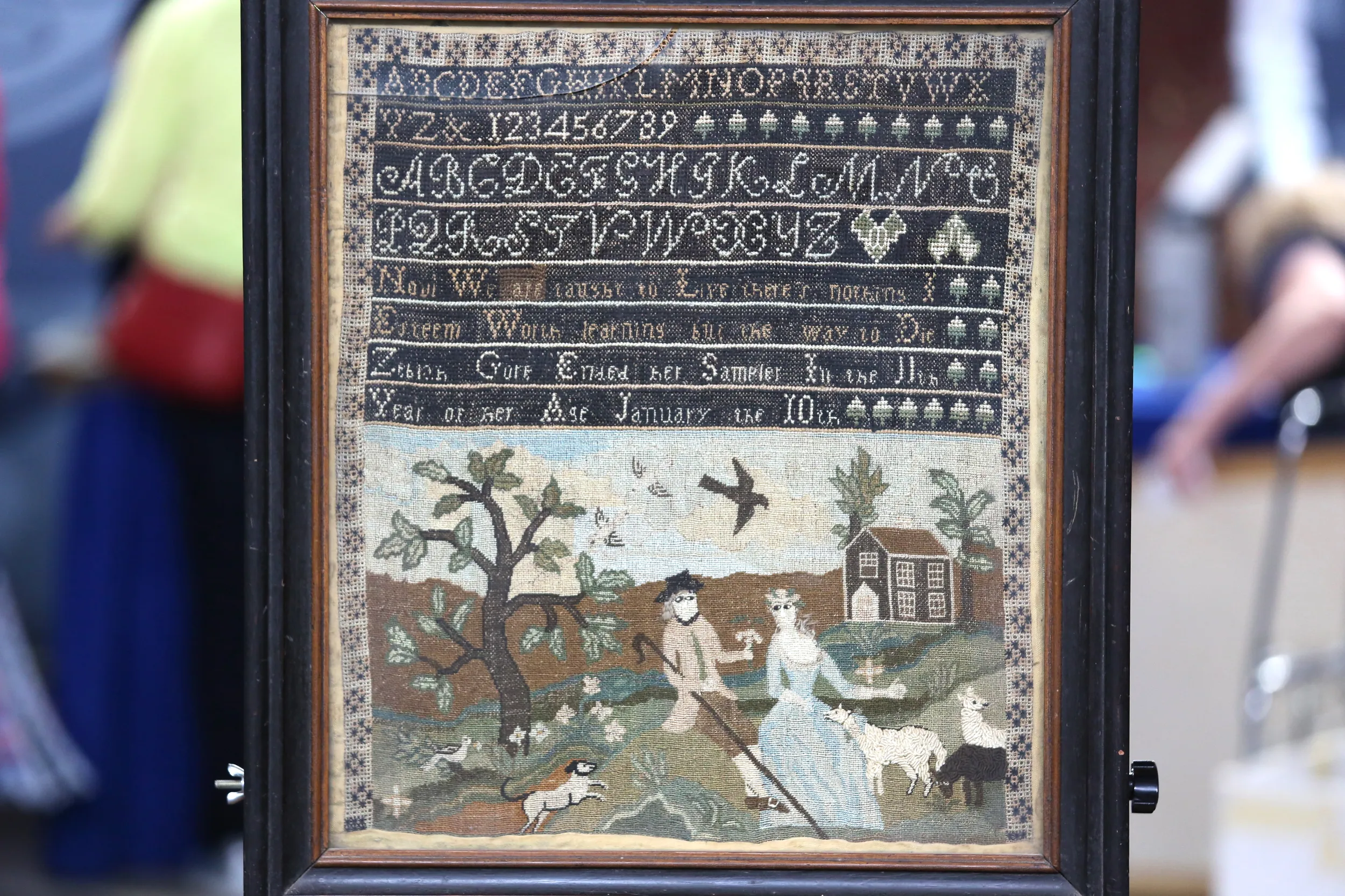
appraisal

appraisal
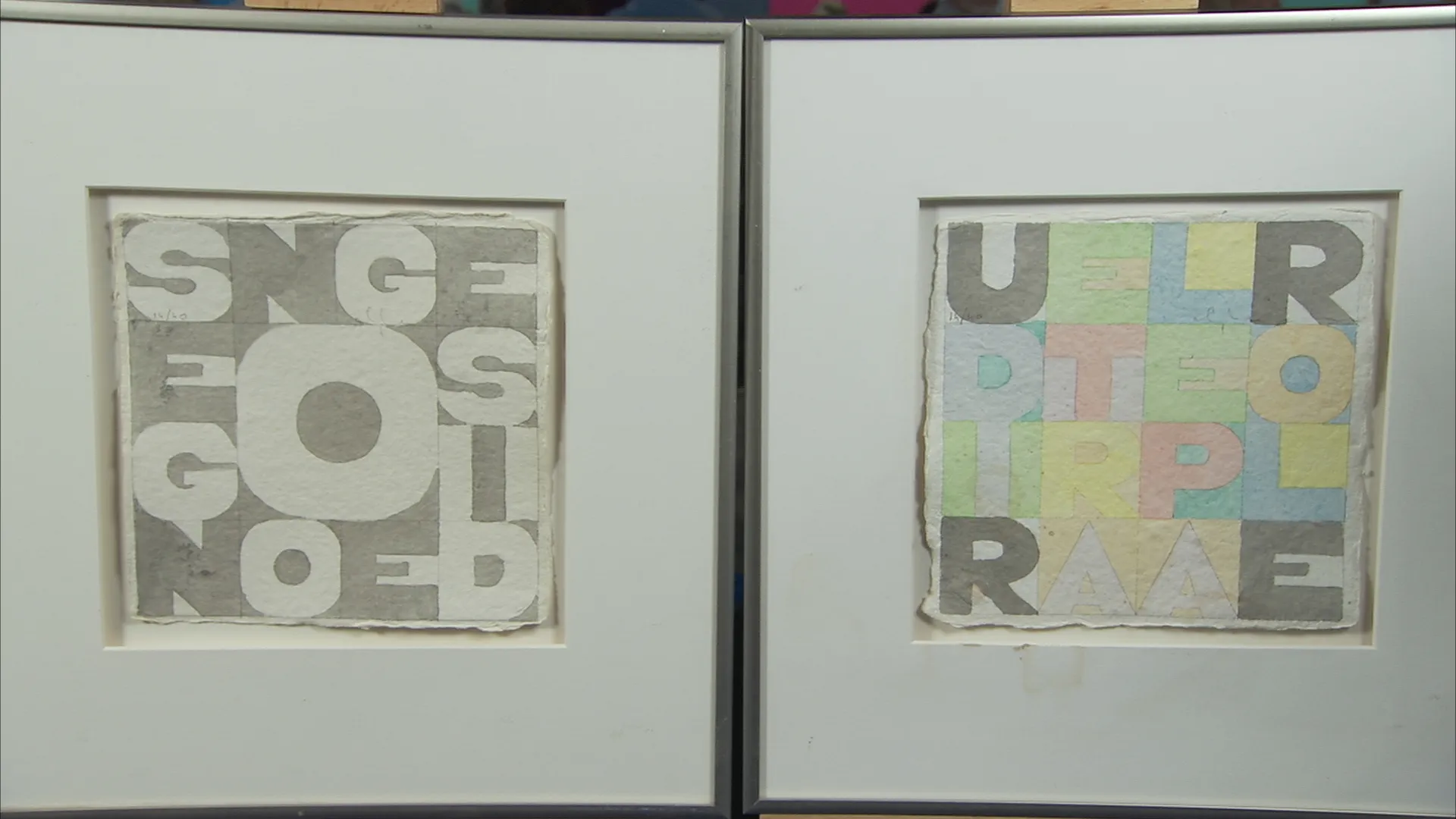
appraisal
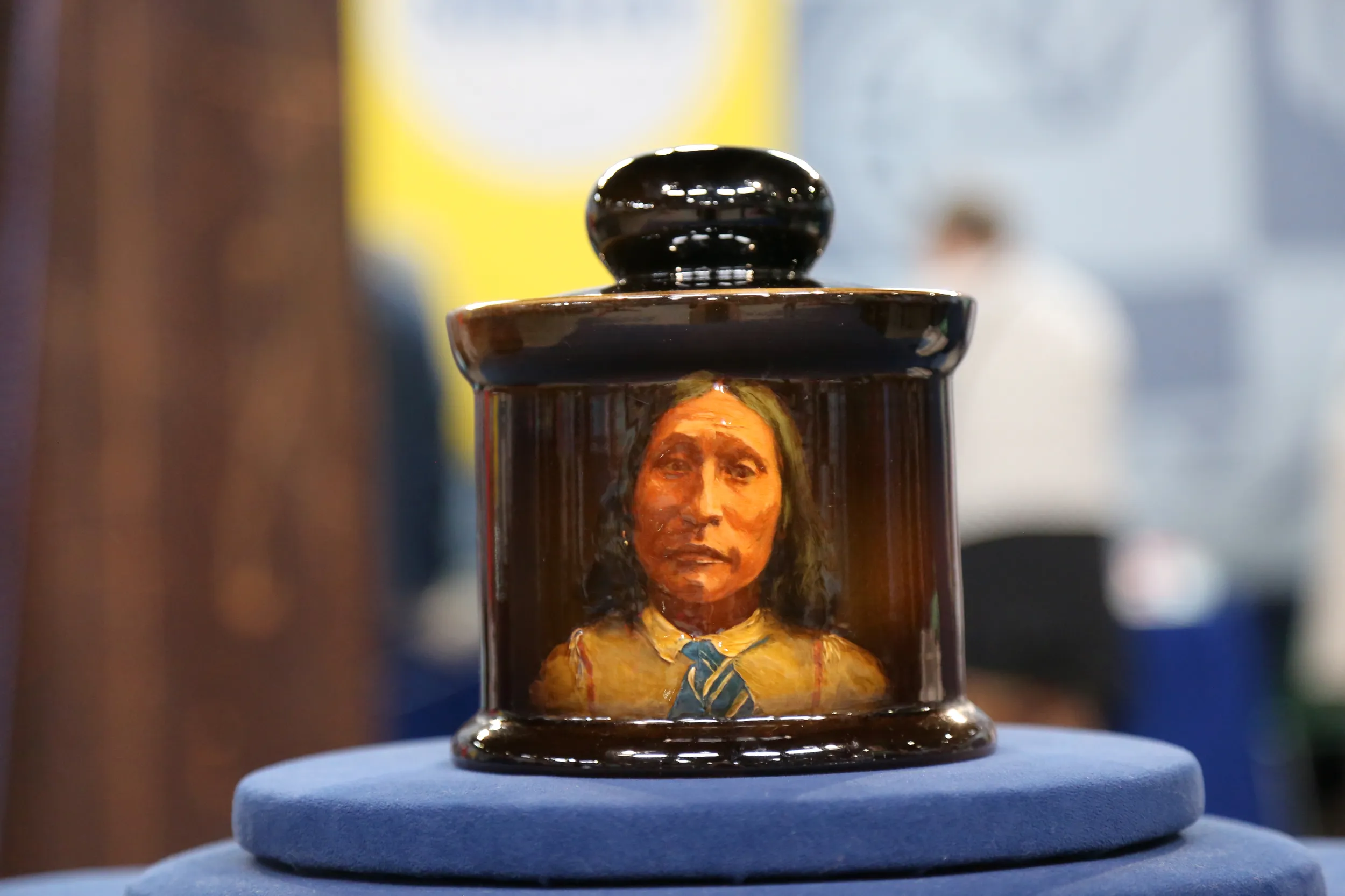
appraisal
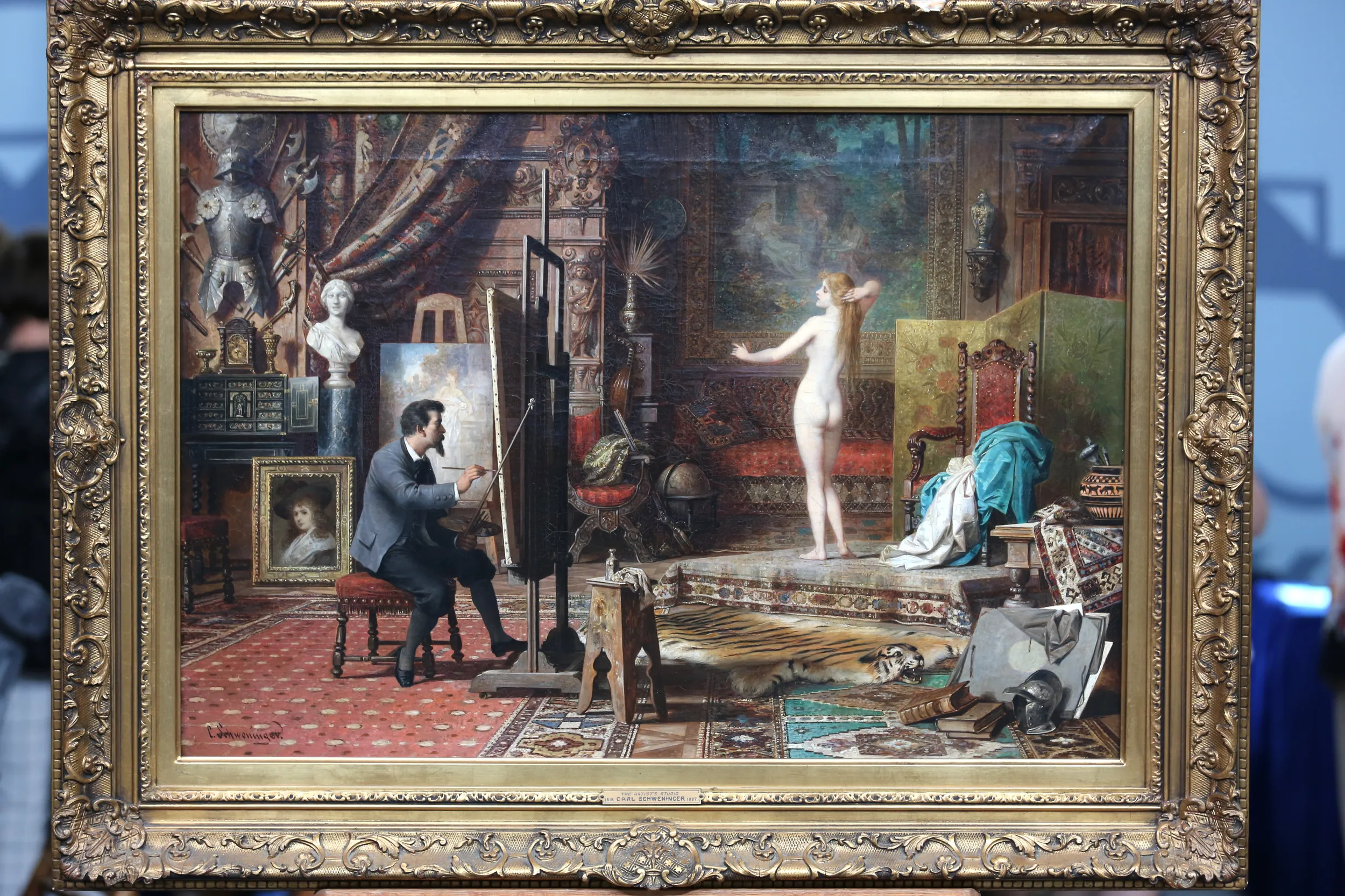
appraisal

appraisal
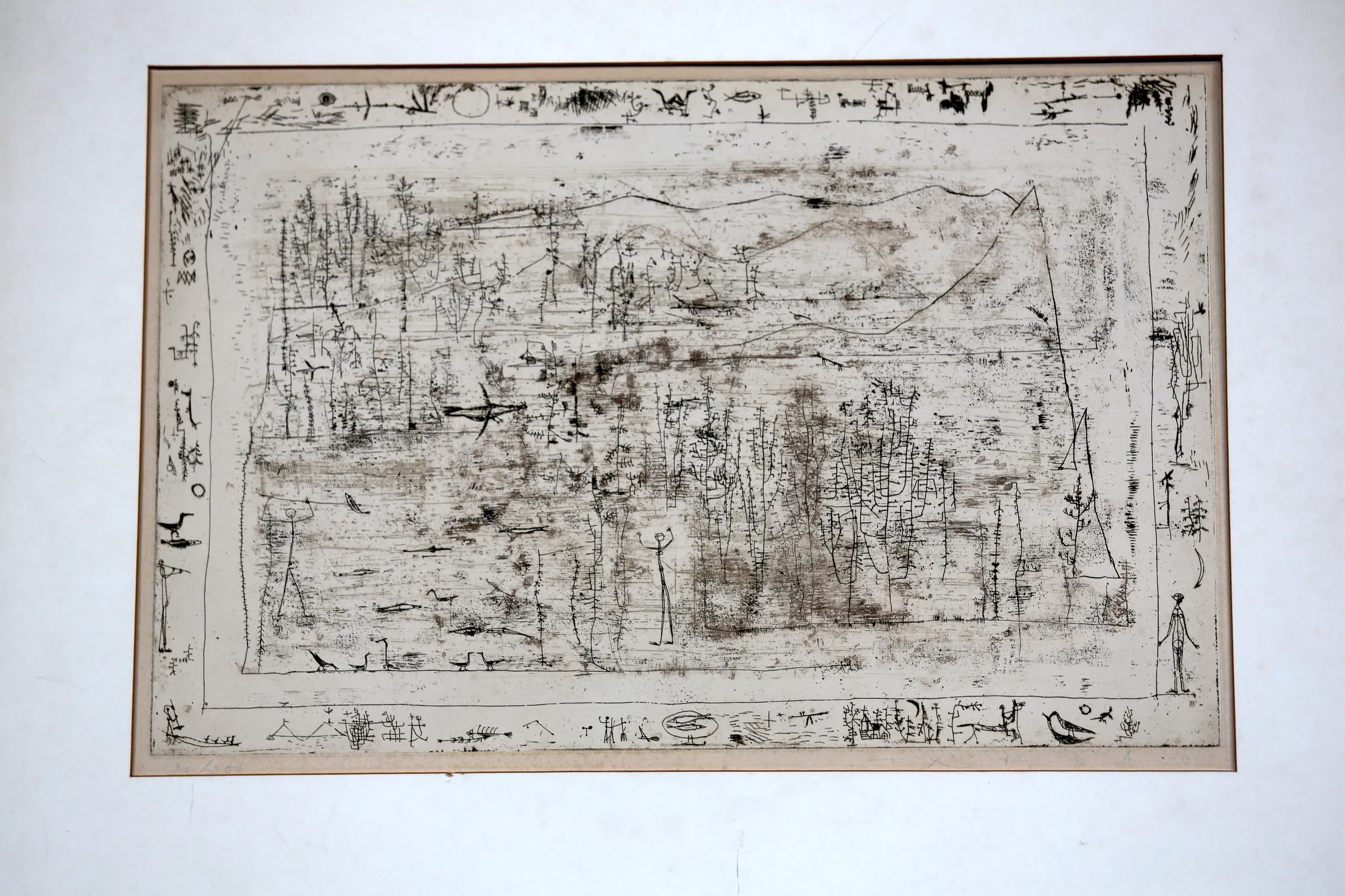
appraisal
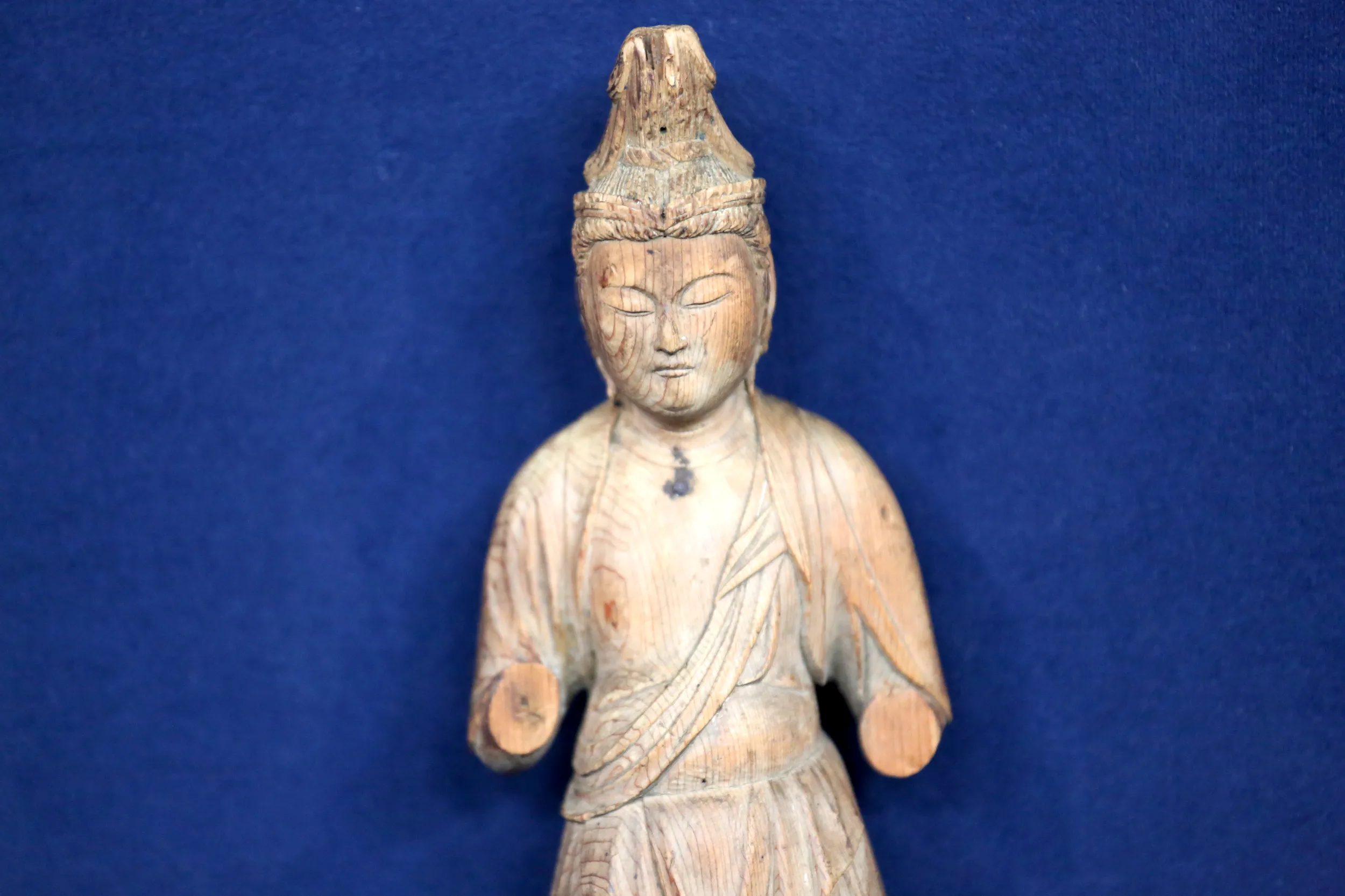
appraisal
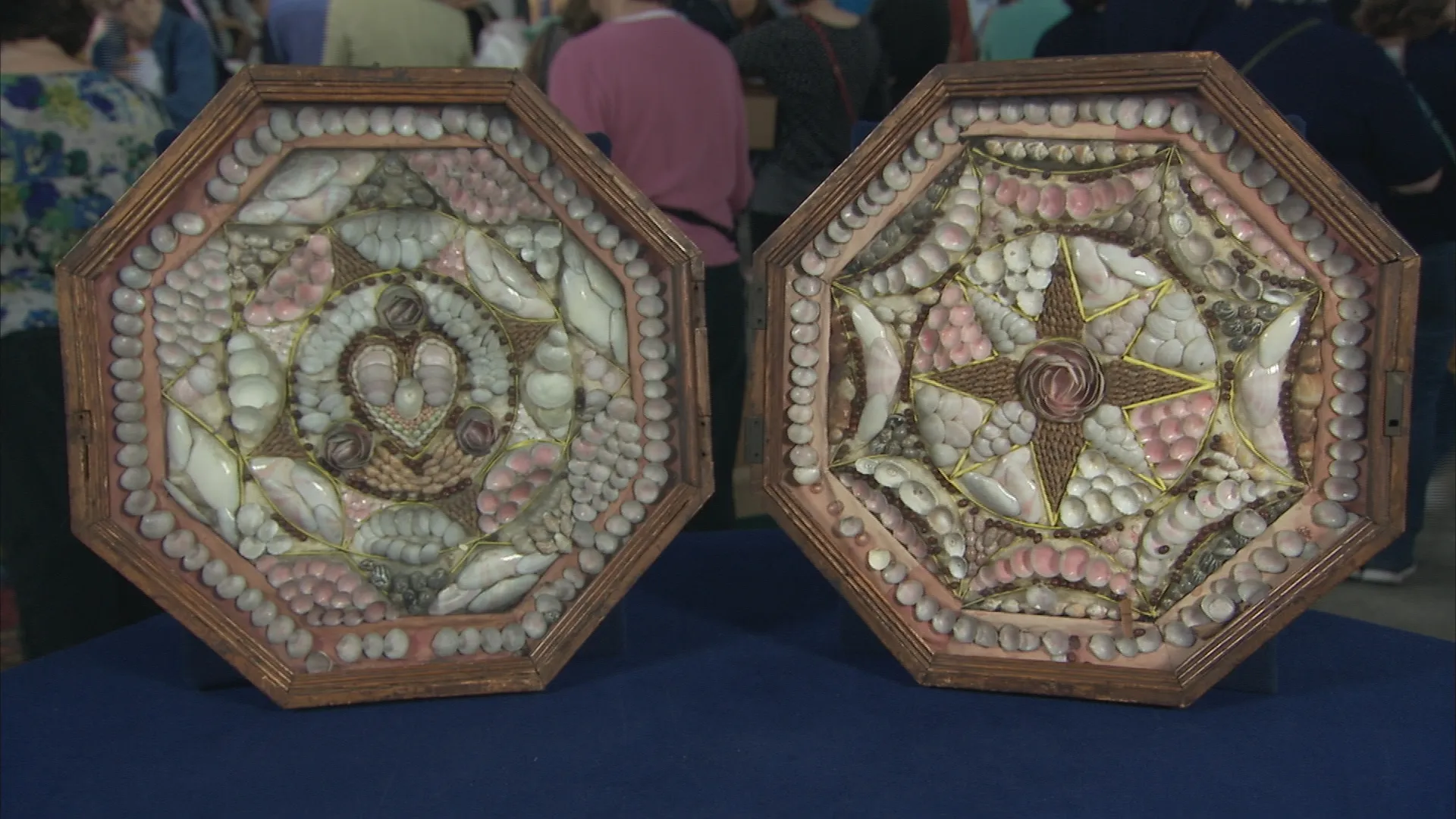
appraisal
appraisal
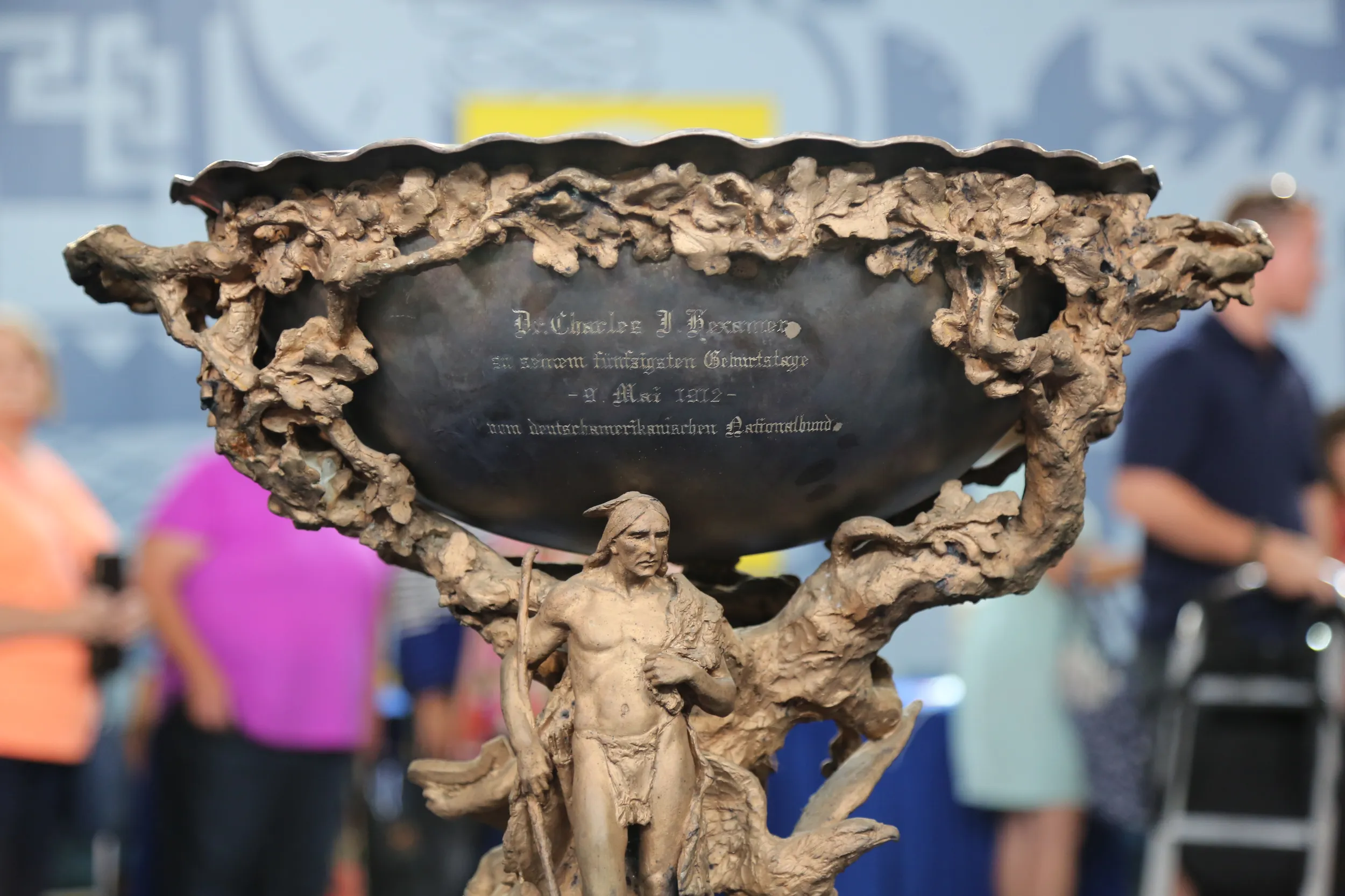
appraisal
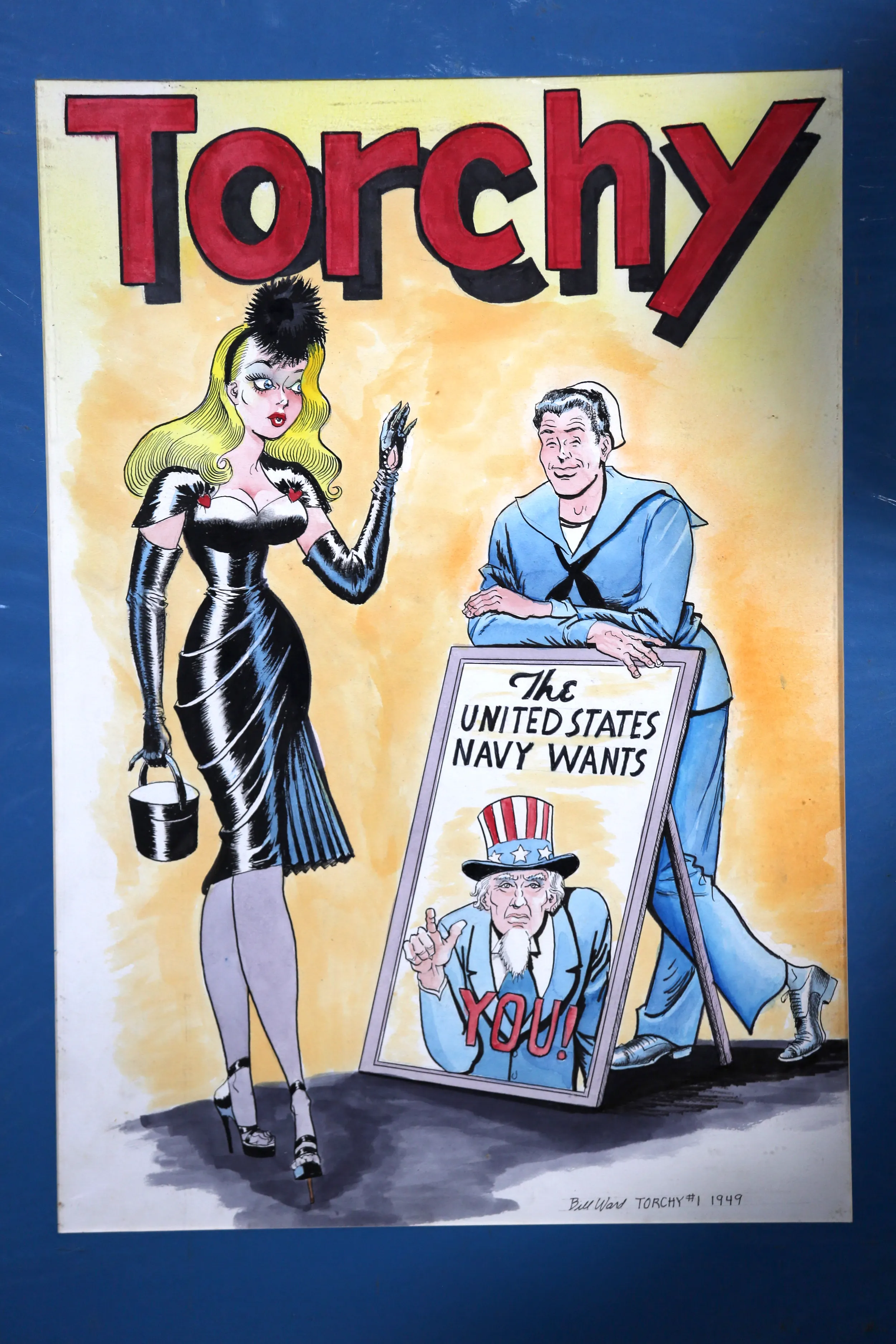
appraisal
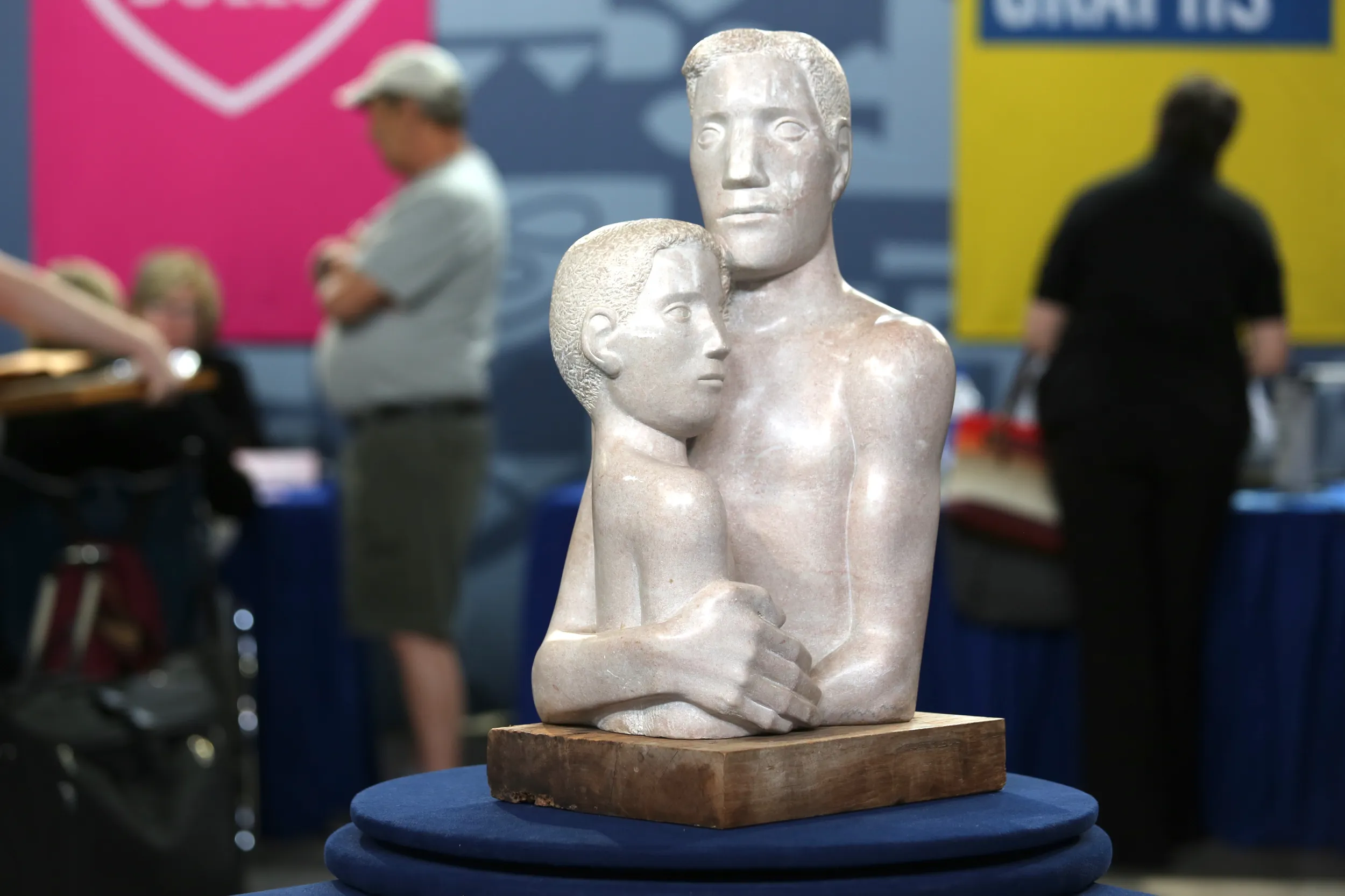
appraisal

appraisal
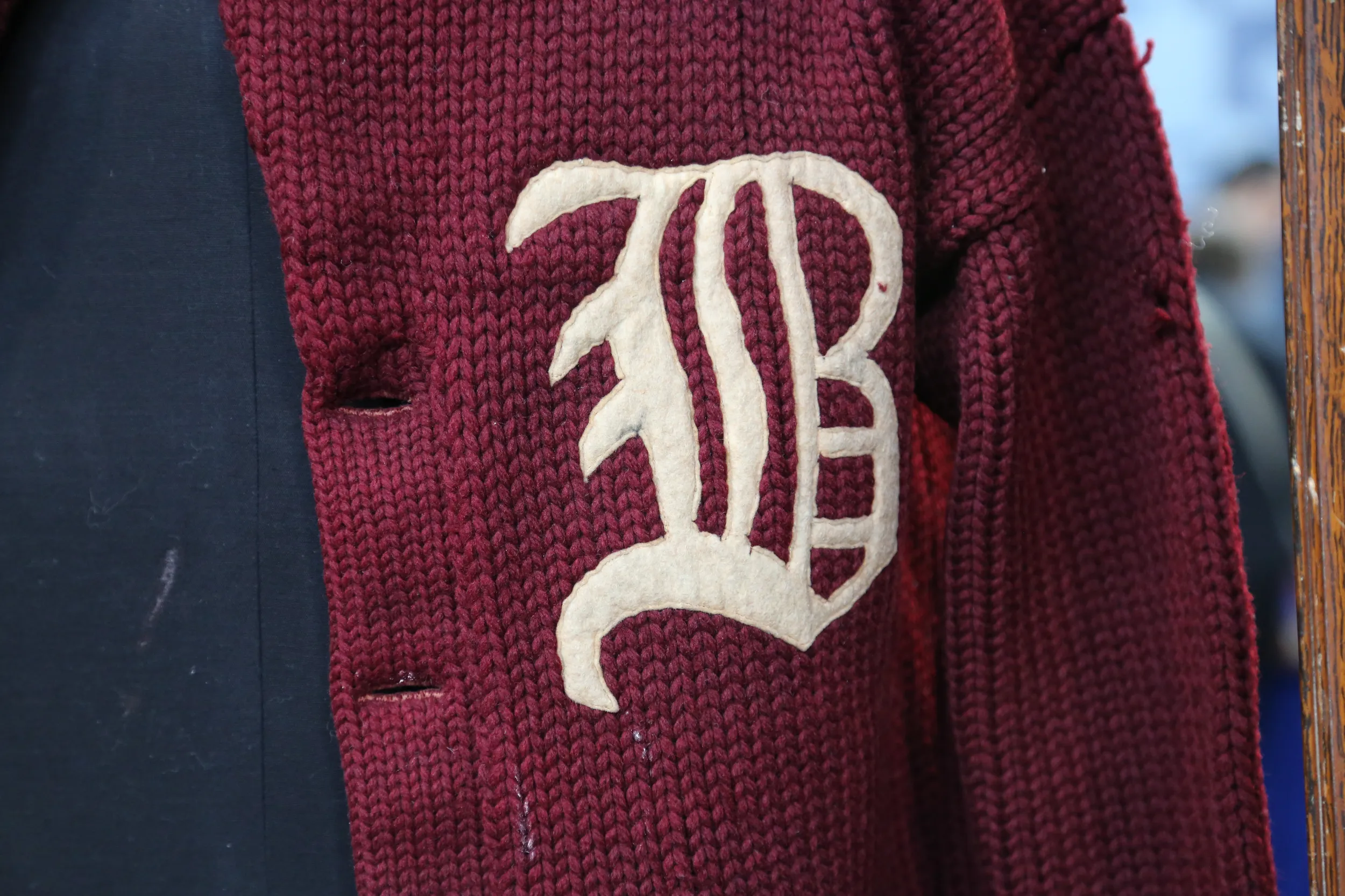
appraisal
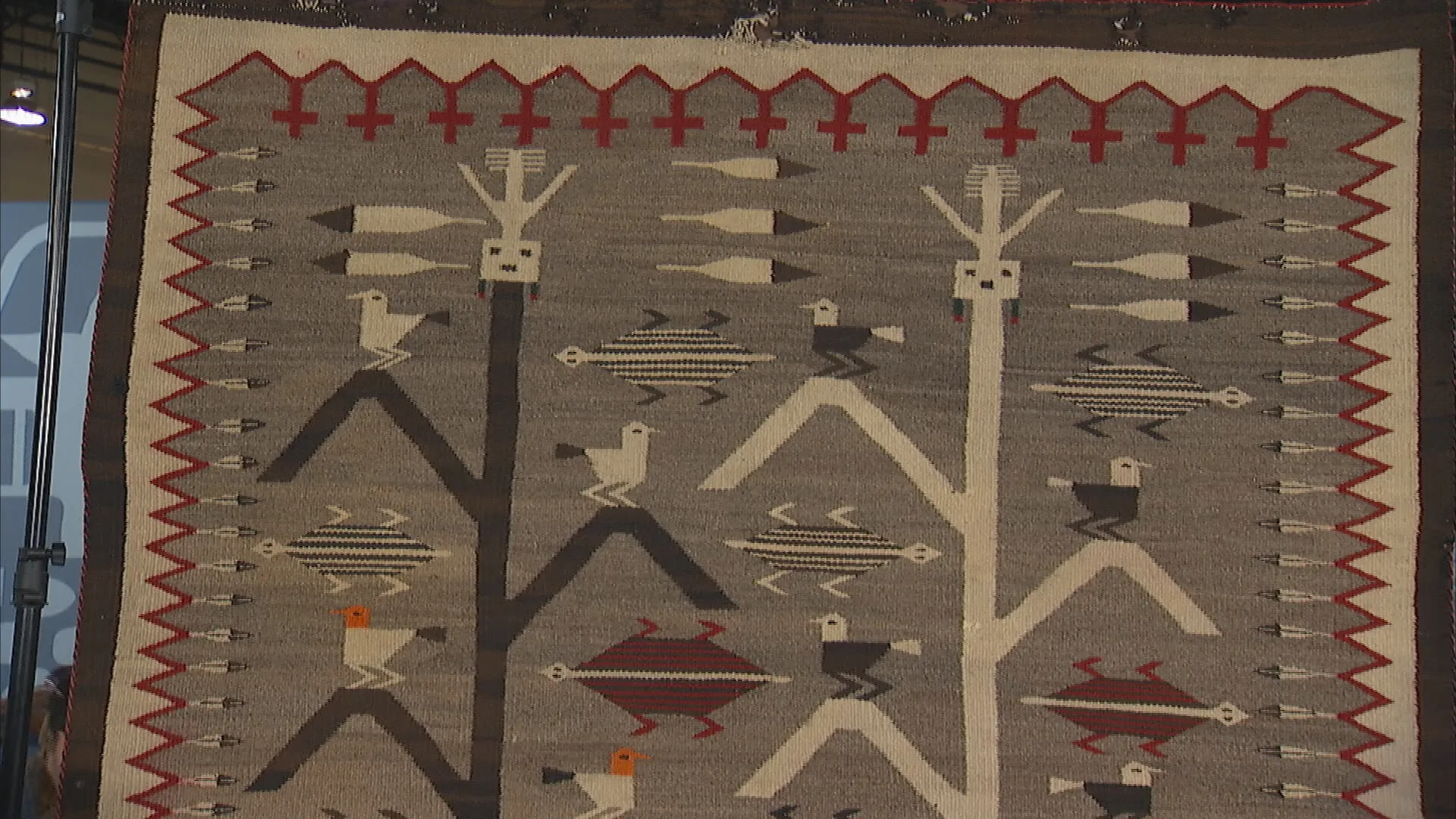
appraisal

appraisal
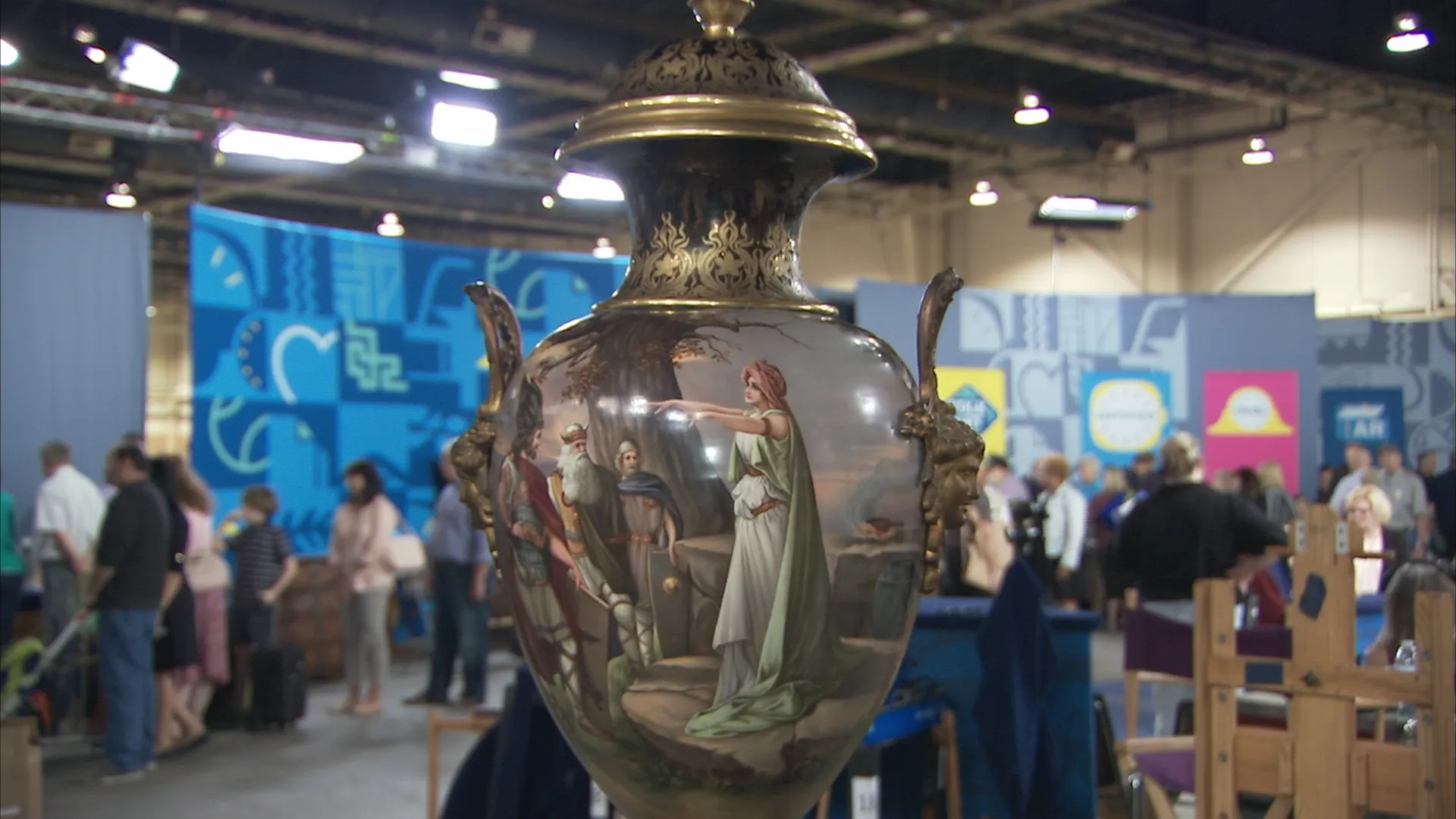
appraisal













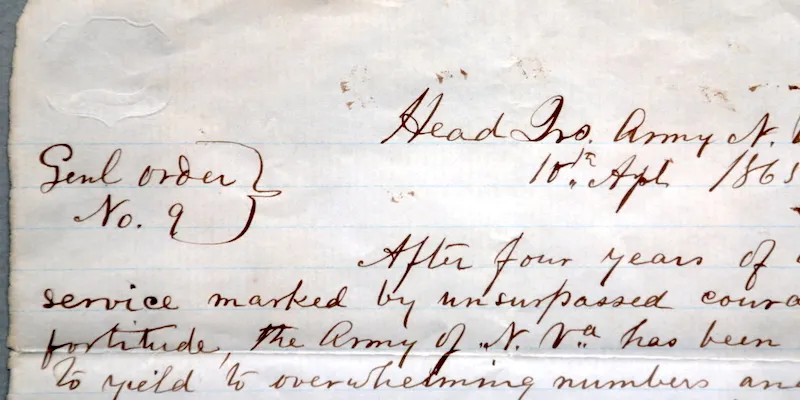
ANTIQUES ROADSHOW seeks to balance cultural sensitivity with its aim of examining the full spectrum of America's antiques and collectibles.
A weekly collection of previews, videos, articles, interviews, and more!
Funding for ANTIQUES ROADSHOW is provided by Ancestry and American Cruise Lines. Additional funding is provided by public television viewers.
ANTIQUES ROADSHOW is a trademark of the BBC and is produced for PBS by GBH under license from BBC, Worldwide. PBS is a 501(c)(3) not-for-profit organization.
A weekly collection of previews, videos, articles, interviews, and more!
Test your appraisal knowledge in ROADSHOW's new game — Price Range!







